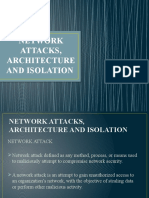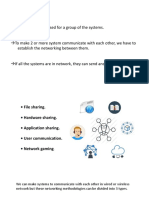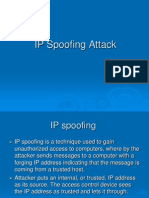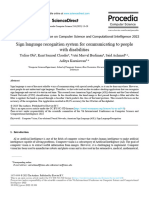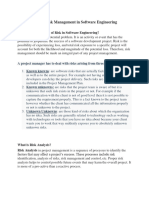0% found this document useful (0 votes)
15 views4 pagesModule 5css
The document discusses four network attacks: packet sniffing allows capturing and analyzing network traffic but raises privacy concerns; ARP spoofing tricks devices into sending traffic to an attacker; port scanning identifies open ports that could be vulnerable; and IP spoofing disguises the source of network packets.
Uploaded by
Jui BhanushaliCopyright
© © All Rights Reserved
We take content rights seriously. If you suspect this is your content, claim it here.
Available Formats
Download as PDF, TXT or read online on Scribd
0% found this document useful (0 votes)
15 views4 pagesModule 5css
The document discusses four network attacks: packet sniffing allows capturing and analyzing network traffic but raises privacy concerns; ARP spoofing tricks devices into sending traffic to an attacker; port scanning identifies open ports that could be vulnerable; and IP spoofing disguises the source of network packets.
Uploaded by
Jui BhanushaliCopyright
© © All Rights Reserved
We take content rights seriously. If you suspect this is your content, claim it here.
Available Formats
Download as PDF, TXT or read online on Scribd
/ 4












